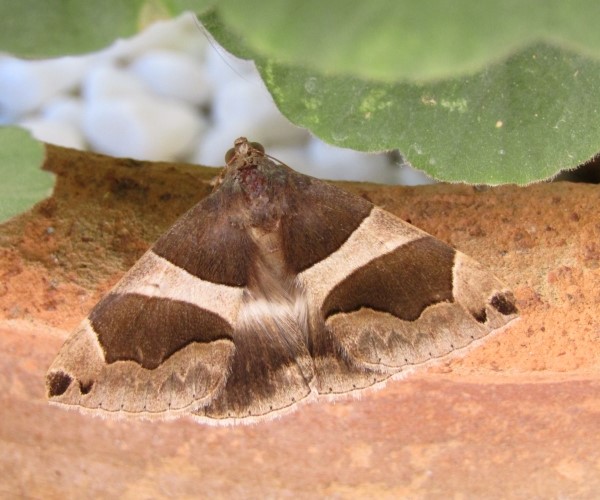
Dysgonia torrida, Crete - photo © K. Bormpoudaki
Dysgonia torrida (Guenée, 1852)
MOTH INFO
Dysgonia torrida is a moth of the family Erebidae on the island of Crete, Greece.
Scientific name
Dysgonia torrida (Guenée, 1852)
Ophiusa torrida (Guenée, 1852)
Common name
Jigsaw
Classification
Superfamily: Noctuoidea > Family: Erebidae > Subfamily: Catocalinae > Tribus: Ophiusini > Genus: Dysgonia
Wingspan
42-50 mm
Appearance
The forewings are relatively broad with an acute apex and an almost straight edge. They are dark brown colored with rounded termen. The ground color is uniformly dark brown, with a light grey-brown median band broadened by slow degrees towards the dorsum and costa, and distinctly separated from a second brown region that elongates to the postmedian line. The subterminal area is light grey-brown and there are two dark brown tooth-like markings in apex.
The hindwings are brownish, and narrow, with a pale-light grey-brown transverse median band, and a broad light grey-brown subterminal area.
Fringes in both wings are whitish-ochreous with a fine, brownish median section.
Habitat
Dysgonia torrida can be found in shrubs and woodlands.
Food plant
Poaceae (Zea mays), Euphorbiaceae (Ricinus communis)
Flight period
| Jan | Feb | Mar | Apr | May | Jun | Jul | Aug | Sep | Oct | Nov | Dec |
Links
Notes
The species is very similar to Dysgonia algira, and can be distinguished by the characteristic detail shown in the photo on the right. In general, identification based on this external characteristic is doubtful.

